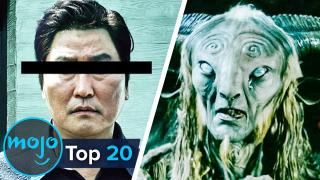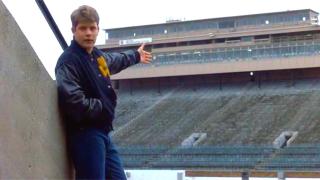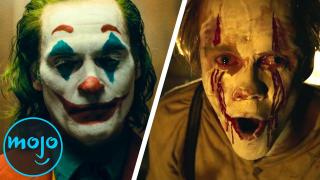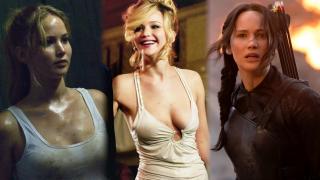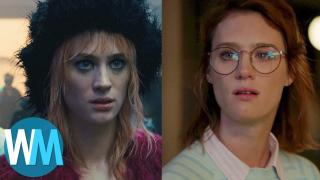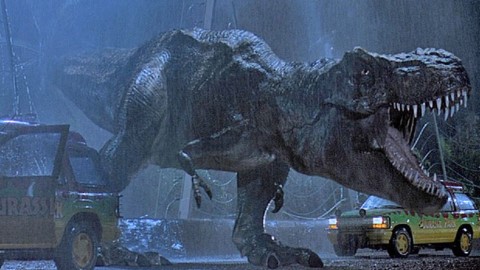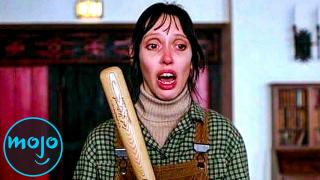Top 10 Most Beautiful Non-CGI Films
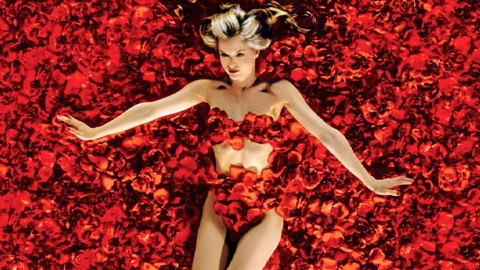
There's a reason a film is called a “moving picture.” Join http://www.WatchMojo.com as we count down our picks for the top 10 most beautiful non-CGI films. For this list, we've picked the ten most visually striking films that were created with little to no CGI, and which instead employ skilled cinematography and vibrancy of color to set the tone of the movie.
Special thanks to our users jkellis, MADLEMONZ, moviemeister and Andrew A. Dennison for submitting the idea through our Suggest Tool.
If you want to see your idea become a WatchMojo video, suggest it at http://www.WatchMojo.comsuggest
Written by Tiffany Ezuma
#10: “Raging Bull” (1980)
Martin Scorsese expected this to be his last major movie, which explains his rigorous editing and attention to detail. Shot in crisp black-and-white, “Raging Bull” uses a lack of color to strip Jake LaMotta’s story down to its essence. Scorsese also employs other visual techniques to heighten the viewer’s understanding, with slow motion indicating amplified awareness and carefully choreographed, stylized boxing scenes punctuating the film. Upon its release, “Raging Bull” opened to mixed review; but now it’s considered a modern classic and one of the decade’s best movies.
#9: “The Last Emperor” (1987)
Top 20 Most Successful Foreign Films
This is one of the only Western films to be shot in China’s “Forbidden City,” and Bernardo Bertolucci uses its location to his advantage by opening up a part of China most of the world doesn’t get to see. With both cinematic splendor and cultural significance, the film was a visual feat in more ways than one, with brilliant costumes and cinematography providing a backdrop for the more than 19,000 extras that filled the movie’s scenes. A critical success, this masterpiece earned nine Oscars.
#8: “American Beauty” (1999)
Top 10 American Football Movies
You’d expect a film named after a rose to share the same beautiful aesthetic. And, with Sam Mendes’ carefully composed shots, uncluttered sets and repeated visual cues like – fittingly – red roses, it more than lives up to its reputation. That use of color is in stark contrast with its black-and-white ending, bringing the movie’s main themes into sharp focus. Though “American Beauty”’s cinematographer, Conrad Hall, wasn’t Mendes’ first choice, much of the film’s beauty comes from his artistic choices, particularly his use of lighting and shadow in key scenes.
#7: “The Fall” (2006)
Top 10 Movies That Should Be On Your Radar This Fall
Taking four-years to film and making use of filming locations in almost thirty different countries, this movie is known for its lush and vibrant colors, as well as its depiction of both manmade and natural beauty. Director Tarsem Singh funded the production himself, so all the film’s artistic and creative decisions could remain his own. The second movie after his other striking feature “The Cell,” “The Fall” was met with mixed reviews due to its convoluted plot; but visually it’s considered one of the best.
#6: “Vertigo” (1958)
Alfred Hitchcock created many visual achievements in his career; including “North by Northwest,” but “Vertigo” is his most ambitious and dazzling effort. Using striking images, precise camera movements and the color green, he manipulates the audience. To capture the protagonist’s acrophobia, Hitchcock used a dolly zoom to create a feeling of dizziness for viewers as well. The film also utilized the San Francisco Bay Area’s landscape and natural features – like steep hills – and manmade elements like bridges, to add to the film’s action sequences and create memorable visuals.
#5: “Lawrence of Arabia” (1962)
Top 10 Jennifer Lawrence Performances
Regarded as one of history’s best movies, David Lean’s “Lawrence of Arabia” left a legacy as a feat in cinematography – and it’s the kind of film that must be experienced on the big-screen. Though it features an unconventional hero and story, this multimillion-dollar film also does an unparalleled job of capturing the vastness of the Sahara desert. Paired with the music, drama, and superb Peter O’Toole performance, it was a major success, winning seven Oscars, and inspiring directors like George Lucas, Steven Spielberg, and Ridley Scott with its visuals.
#4: “Blade Runner” (1982)
Top 5 Reasons Why You Recognize Mackenzie Davis In Blade Runner 2049
This film was a game-changer when it came to the way movies depicted the future. Instead of the sleek skyscrapers and bright lights audiences were used to seeing, “Blade Runner” created a future that was dark, bleak, and mysterious – both thematically and visually. With Edward Hopper’s painting “Nighthawks” and the French sci-fi comic magazine “Heavy Metal” as inspiration, director Ridley Scott created scenery that gives the story a neo-noir feel, establishes societal inequality, and cements “Blade Runner”’s spot as a seminal film.
#3: “The Tree of Life” (2011)
Top 10 Visually Striking CGI Filled Films
Terrence Malick is known for capturing nature’s beauty in films like “Days of Heaven” and “The Thin Red Line.” But “The Tree of Life” is his masterwork, depicting human life and its meaning by focusing on one family in 1950s Texas. The film is known for one sequence in particular: it’s a stunning and vibrant scene that depicts the cosmos and the universe’s creation. But instead of using CGI, Malik employed special-effects artist Douglas Trumbull, who went old-school and created the sequence using photography and household objects.
#2: “The Wizard of Oz” (1939)
Top 10 Times Actors Exposed Dark Truths About Their Films
It’s hard to imagine a mythical world more beautiful than the Land of Oz. And its fairy-tale visuals are only heightened by the contrast between the vivid Technicolor of Oz, and the flat black-and-white depicted back in Kansas. The effect made the movie appear otherworldly, and it brought L. Frank Baum’s story to life in a way that would’ve been impossible a few years earlier. “Wizard” didn’t win Oscars for special effects or set design, but it undoubtedly features some of the most iconic visuals ever put to film.
Before we unveil our number one pick, here are a few honorable mentions:
- “The Night of the Hunter” (1955)
- “In the Mood for Love” (2000)
- “Citizen Kane” (1941)
- “Schindler’s List” (1993)
- “Ran” (1985)
#1: “2001: A Space Odyssey” (1968)
Stanley Kubrick created a legacy as a visual director and storyteller, and many of his works are considered some of Hollywood’s most beautiful movies, including 1975’s “Barry Lyndon.” But “2001” is like no film before or since: primarily a visual experience with very little dialogue, the movie is a thrilling feat given the lack of technology available at the time. Today, a film like this would use only CGI; but Kubrick covered the whole of human existence and beyond with clever camera angles, photography, and hidden wires on a rotating set.
Do you agree with our list? What’s the most beautiful film you’ve seen? For more stunning Top 10s published daily, be sure to subscribe to WatchMojo.com.


 1
1
 0
0
 report
report

 0
0
 1
1
 report
report

